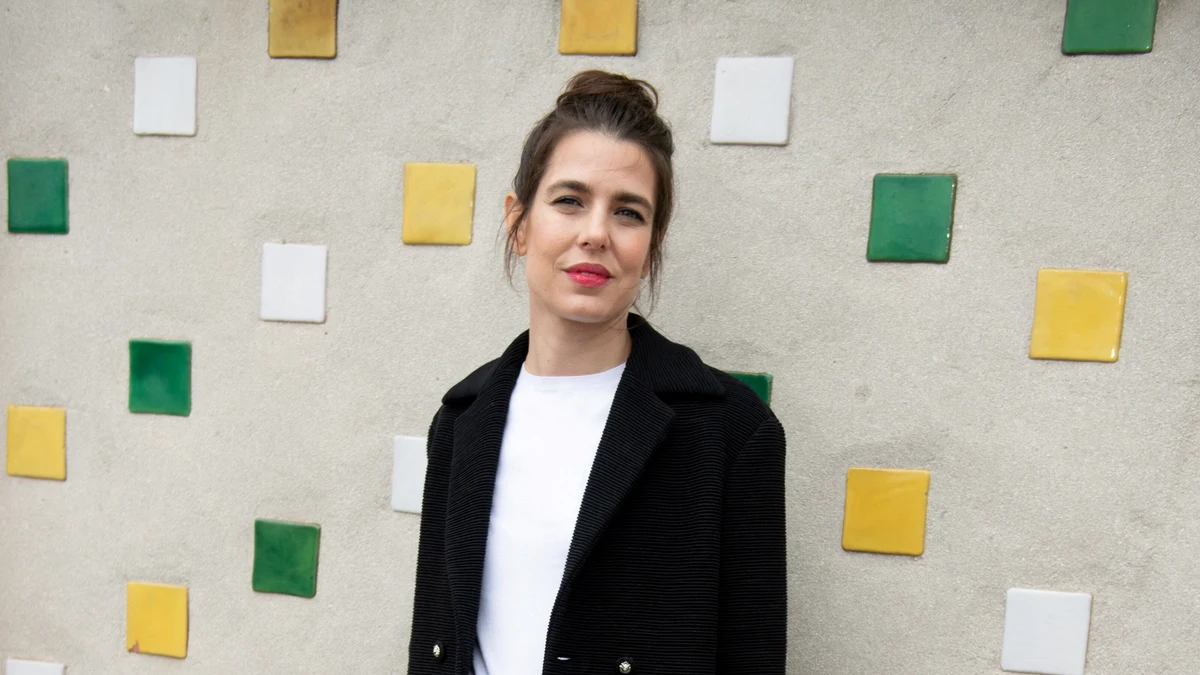Have we come to an understanding about ramen?
I’m not so sure. It bears recognizing then that there’s a whole wide world of ramen, from instant noodles to traditional Japanese to modern interpretations.
And then there’s the intensely personal ramen at one restaurant in the Logan Square neighborhood of Chicago. Open since late last fall, there still seems to be a perpetual line outside. It’s a measure of the reputation within.
Akahoshi Ramen offers more than beautiful bowls by chef Mike Satinover, who’s exceeding his exacting standards by letting some go.
Satinover previously held sold-out pop-ups. This is his first business and he’s the sole owner. He reminds his staff daily of their mantra, “We serve ramen and not much else.”
But what remarkable ramen it is. There are only four ramens on the menu, with a fifth monthly special, two rice sides and a select beverage list.
“And that’s it,” Satinover said. “It’s a ramen shop.”
A shop where they make nearly everything in house, from glistening aromatic oil to custom crinkly curls.
“That’s what I stand for, I wanted to make everything in the restaurant,” the chef said. “The noodles, the soup, the chashu, the tare, the toppings.” You may know that tare, pronounced tah-reh, is the sauce or paste that’s the seasoning or soup base for ramen.
The Akahoshi miso ramen with ajitama egg on the side at Akahoshi Ramen in Chicago on March 28, 2024. (Vincent Alban/Chicago Tribune)
The lush Akahoshi miso, a study in gold and light, topped with tender pork chashu, has become the favorite by far, accounting for about half of all the ramen they sell.
“I’m not surprised and kind of intended it to be that way,” Satinover said. “It’s the one that is most closely tied to who I am.”
It’s reflective of his ramen journey, which began in Sapporo, the city on the northerly island of Hokkaido, Japan.
“I could talk about it forever,” said the chef when asked about how he builds his signature bowl. His miso ramen, he added, follows a Sapporo-style procedure with some chef’s license. First, they stir-fry bean sprouts with lard, salt and MSG to take in wok hei, the smoky breath of the wok. Then they sear an aromatic miso tare paste to bring out its depth and deglaze with a simple house-made chicken soup. That’s poured over the crinkly Sapporo-style noodles, aged several days for flavor and texture, and aromatic oil at the bottom of the bowl.
“The fat bubbles right up to the top” giving a shiny and frothy glow, he said.
They finish the bowl austerely with green onion and sliced chashu.
The ikura rice bowl, from left, ajitama egg on the side, Akahoshi miso ramen and yuzu highball cocktail at Akahoshi Ramen in Chicago on March 28, 2024. (Vincent Alban/Chicago Tribune)
“Pork belly that’s been simmered in a delightful blend of soy sauce, mirin, sugar, salt, garlic and other seasonings, until it’s meltingly, quiveringly tender if I’ve done it correctly,” said Satinover laughing. A few menma (fermented bamboo shoots) and the bean sprouts complete the bowl.
Two elements make his miso ramen different from what he’s had in Hokkaido.
The first is the miso blend in the tare, the chef said. Most ramen shops use a blend of white and red miso, but they also include hatcho miso at Akahoshi. “This miso is super dark. It’s almost like chocolate in color. And that is really, really bizarre to include in ramen.”
Secondly, in Hokkaido they use straight lard, Satinover said, whereas their lard has aromatic complexity from onion, ginger and garlic. “That’s super weird too,” he added. Modern ramen shops may also play with it, but classic shops in Sapporo are just using “heart-stopping amounts of lard.”
The lard creates a kind of a barrier and helps the soup retain its heat, the chef said, giving it a luxe appearance with a decadent feeling.
Ironically, he considers the fact that he makes his noodles, with their golden glorious bite, a minor difference.
The exquisite classic shoyu, with wavy noodles and pork chashu too, may be a surprise if you’re expecting a soy sauce-forward flavor. The translucent soup tastes like treasured memories of the clean open sea.
The classic shoyu ramen on March 28, 2024, at Akahoshi Ramen in Chicago. (Vincent Alban/Chicago Tribune)
“That shoyu flavor is very Japanese,” said Satinover. “If you don’t like fish, this is not the dish for you.”
The chef, it should be noted, is not Japanese.
Akahoshi loosely translates to two Japanese characters, he said, which mean red and star. Red stars are symbolic of Sapporo. Chicago’s flag also has four red stars. Satinover chose his shop’s name to represent both cultures, and how he came to this point in his life.
He lived in Sapporo for a year. That’s where he first started “getting really crazy into ramen” 15 years ago. It’s also where miso ramen was invented, his favorite style.
When he came back, he began by making ramen only for friends and family.
“I didn’t initially have plans to open a restaurant,” the chef said. He was chasing nostalgia.
Satinover did his first pop-up in New York City at the now-closed Ramen Lab by Sun Noodle, the craft ramen company, in 2017.
Mike Satinover, chef and owner of Akahoshi Ramen, at his restaurant on March 28, 2024, in Chicago. (Vincent Alban/Chicago Tribune)
When he came home, Derrick Tung of Paulie Gee’s in Chicago asked Satinover if he’d be willing to do a pop-up at Tung’s pizzeria in Logan Square.
“I distinctly remember being on the Wilson train platform,” Satinover said. “It was super cold and snowing.” He didn’t know what was going on, or that what would happen would change his life in ramen.
Perhaps most importantly, he’s making his own noodles to showcase the breadth and depth of ramen.
“It is extremely challenging and difficult,” he said. “And I’m probably getting back problems from it, but it gives me that flexibility.”
I’m so impressed by the distinct differences in the noodles, from the signature Sapporo to an unorthodox straight style in the March special Toyama Black. Most people would have been none the wiser with the same noodles in all the bowls.
“And a lot of ramen shops do that,” Satinover said. “But it feels really gratifying to be able to say we have five ramens on the menu and three different noodles.”
The stunning soupless tantanmen, inspired by Chinese dandanmian, uses thicker flat noodles. It’s a head-turning bowl, topped with fire engine red mala pork soboro. The Sichuanese spicing lends lovely numbing heat to the fried ground meat, tempered with nutty sesame paste and a bit of crisp bok choy.
The soupless tantanmen, with added mala spice, at Akahoshi Ramen in Chicago on March 28, 2024. (Vincent Alban/Chicago Tribune)
The aburasoba, another soupless ramen, also uses the thicker noodles. Topped with chopped chashu, plus fried garlic and shallots, it’s an excellent textural bowl that highlights the irresistible chewy noodles. But it’s subtle in a collection that explores extremes.
How did Satinover choose aburasoba as one of his four core styles on the menu?
On the one hand, he just really likes it, the chef said. On the other hand, it’s sort of a business move made with 40 pounds of pork belly a day.
“There are going to be pieces that you really can’t serve as a slice,” he said. But it’s delicious stuff that you can chop up and toss it with garlic lard and seasoning, he added. “And then it’s pretty tasty tossed with some noodles.”
The Aburasoba at Akahoshi Ramen in Chicago on March 28, 2024. (Vincent Alban/Chicago Tribune)
Or rice, in the terrific chashu bowl. That does pale in comparison with the ikura bowl, a specialty of Hokkaido, smothered in luminous cured salmon roe. The Koshihikari short-grain white rice imported from Japan was a touch dry to my taste on two visits.
“I am not Rice Lord,” said Satinover laughing. He’s perhaps best known to some as Ramen Lord, his username on Reddit, the online network of communities and obsessions. “We’re still kind of figuring that out.”
The ikura rice bowl at Akahoshi Ramen on North California Avenue on March 28, 2024. (Vincent Alban/Chicago Tribune)
They’re also still figuring out some small service issues. When you arrive at the restaurant, if you have reservations, released Mondays at noon, then you can skip the line. About half the seats are available for walk-ins. But that’s unclear at the door and in the minimalist dining room.
Satinover works behind the chef’s counter in the open kitchen next to the bar area, where they mix bright yuzu highball cocktails and offer the Hitachino Nest yuzu ginger nonalcoholic lager as a sophisticated, nonalcoholic pairing alongside beer, sake, wine and sodas.
The Yuzu highball cocktail at Akahoshi Ramen in Chicago on March 28, 2024. (Vincent Alban/Chicago Tribune)
A communal table stretches down the middle of the room with booths along a wall and a few stools in the window overlooking California Avenue.
A discreet sign at the door, and a few more chopstick holders on the tables with napkins, would go a long way with a friendly staff that seemed overwhelmed at times. But these are early days for the restaurant and Satinover, an owner who’s thoughtful and intentional about more than the food.
“I’m very proud of the fact that for the most part, we don’t throw any food away,” said the chef. “Like when an egg breaks then my team eats it for staff meal.”
And that leads us to the egg question. Why doesn’t he include an ajitama egg with any of his ramen? The soft yolked egg marinated for days is available as an extra topping for $2.
“There’s a couple of reasons. One, I always felt like eggs were add-ons when you go to a ramen shop in Japan,” Satinover said. “And we just spend a lot of time peeling eggs. I want to make sure that my team is compensated well for that labor.”
It’s a delightful extra, he added, but it is extra.
The interior of Akahoshi Ramen in Chicago on March 28, 2024. (Vincent Alban/Chicago Tribune)
“There is unfortunately this business element of it too,” Satinover said. “We’re already expensive, and I want people to be able to afford it.”
But $19 for a ramen bowl is not expensive for what it is, in the same sense that a great plate of house-made pasta is priced at $20, $30 or more than $40.
“People say, oh, the egg should be free,” Satinover said. “I would say the egg is arguably the most labor-intensive process in our restaurant. I have a person who spends two to three hours every day, boiling, peeling and marinating eggs. It’s half of their job.”
For just one component.
“This is back-of-the-house stuff that I don’t think a lot of people really know,” said Satinover. “But my staff are very well compensated at the restaurant. Everybody who’s full-time has health care right now. And that’s because we do stupid stuff like charging for an egg.”
He understands there’s something about 20 bucks for a bowl of ramen that’s unsettling for people right now. But in addition to the extraordinary work, it’s a huge meal at that price.
“I frankly feel like if you can finish a full bowl of ramen and you’re still hungry, I don’t feel like I haven’t done the job,” he said laughing.
Akahoshi Ramen
2340 N. California Ave.
Open: Tuesday to Saturday 5 to 9 p.m.
Prices: $19 (Akahoshi miso), $18.50 (classic shoyu), $18 (soupless tantanmen and aburasoba), $15 (ikura rice bowl), $11 (yuzu highball), $2 (ajitama egg)
Noise: Conversation-friendly
Accessibility: Wheelchair accessible with restrooms on single level
Tribune rating: Excellent, three stars
Ratings key: Four stars, outstanding; three stars, excellent; two stars, very good; one star, good; no stars, unsatisfactory. Meals are paid for by the Tribune.
Big screen or home stream, takeout or dine-in, Tribune writers are here to steer you toward your next great experience. Sign up for your free weekly Eat. Watch. Do. newsletter here.





